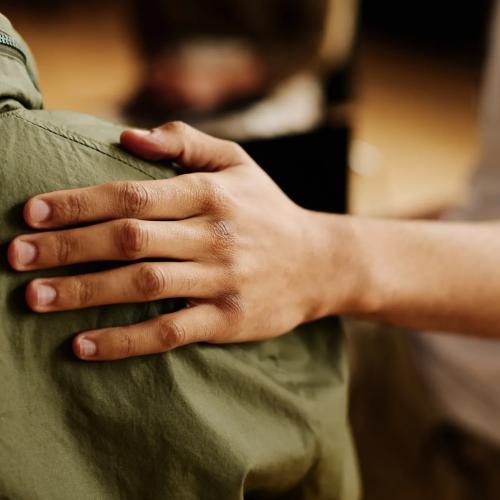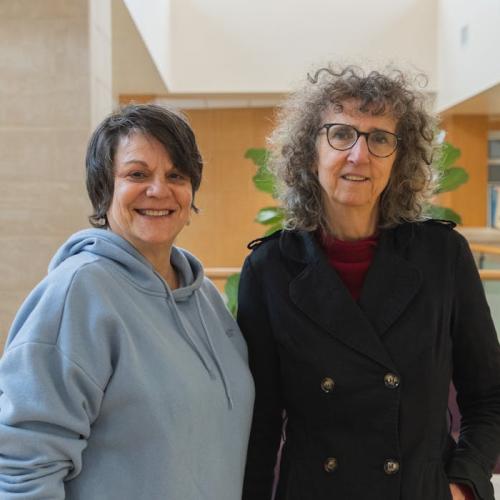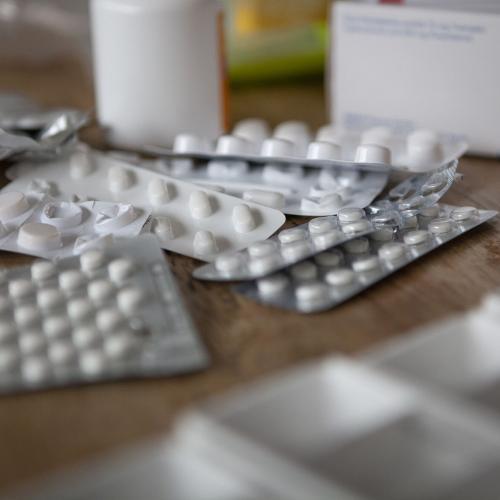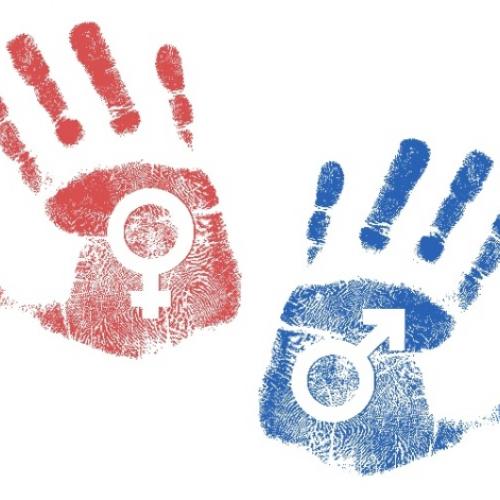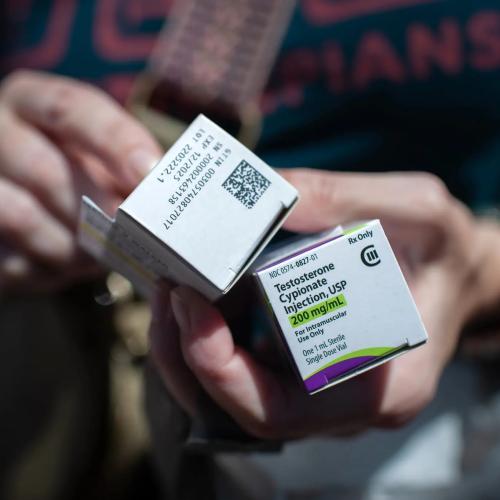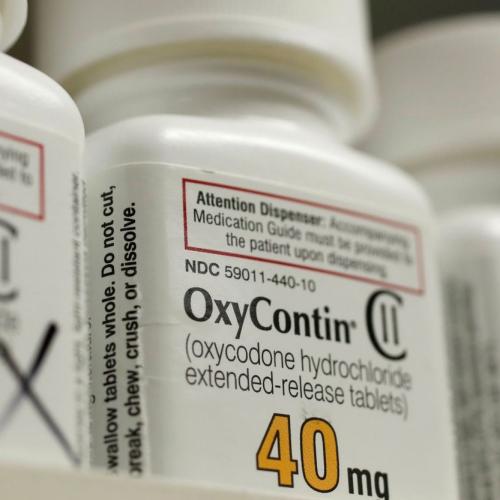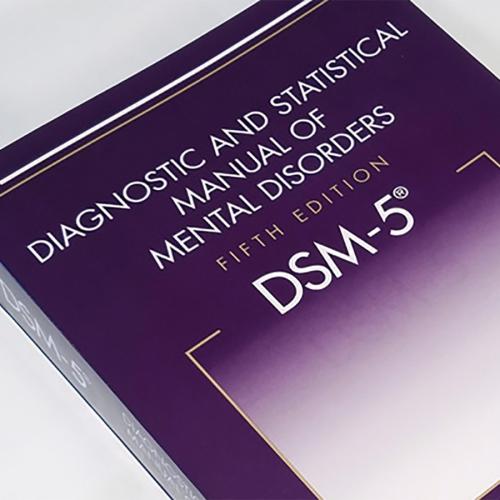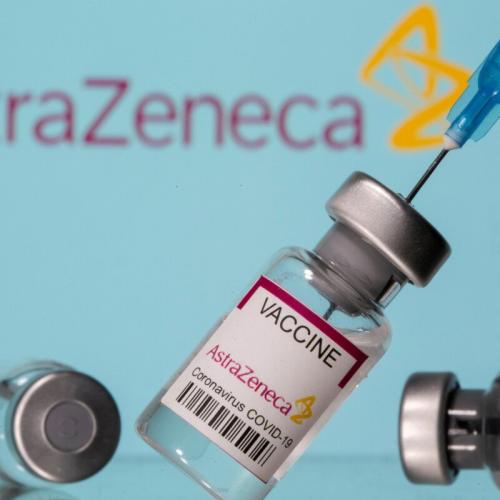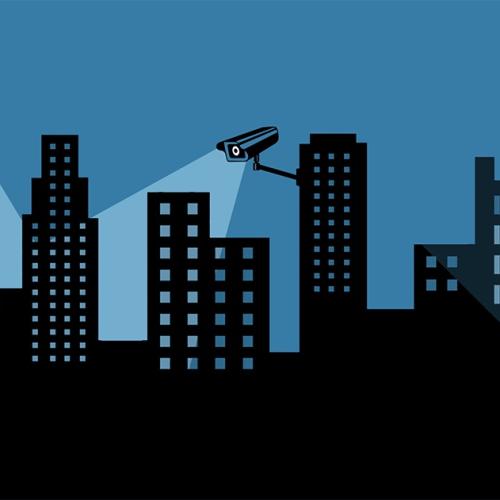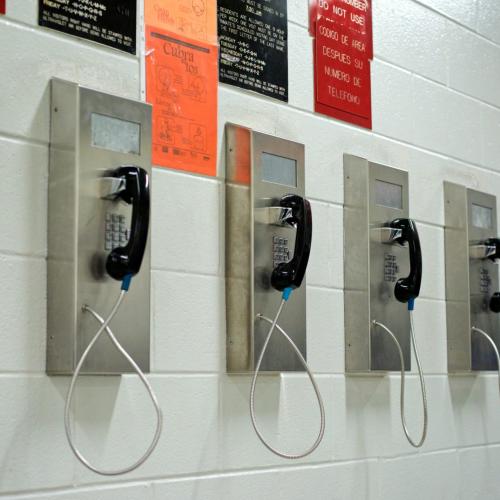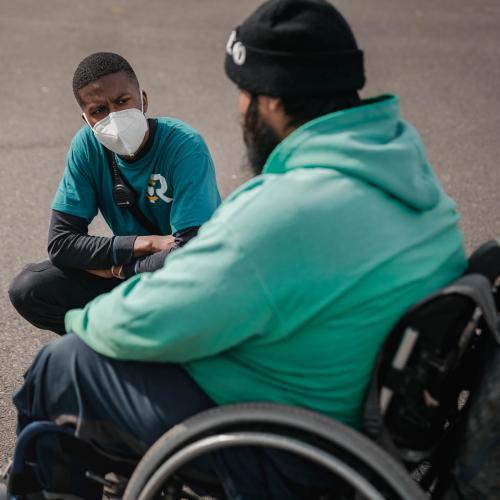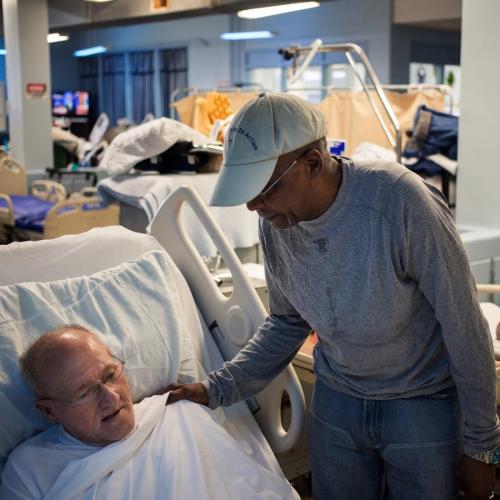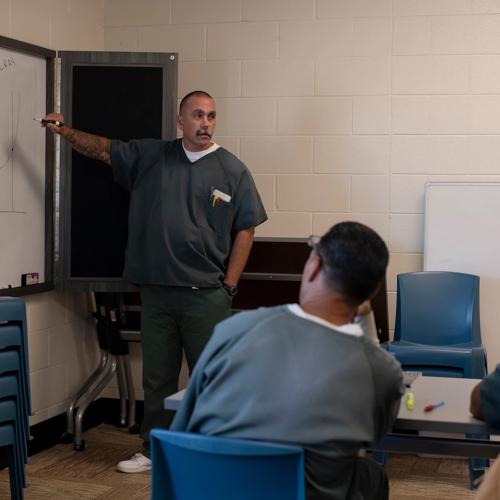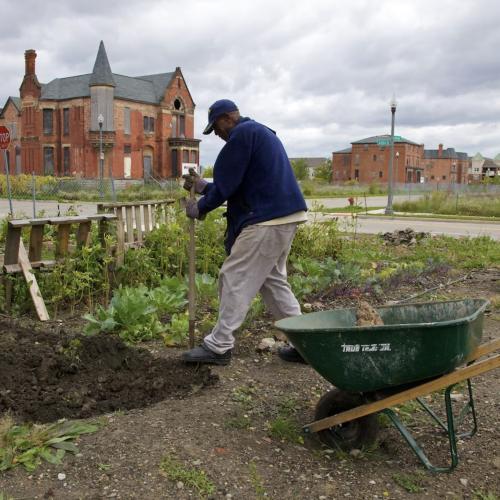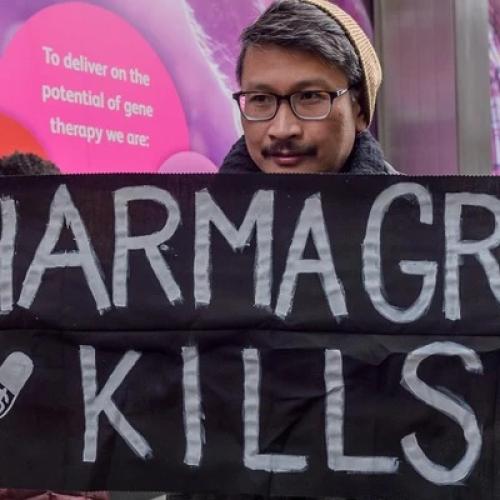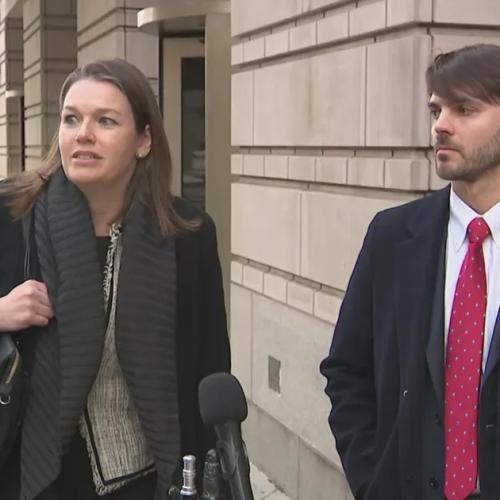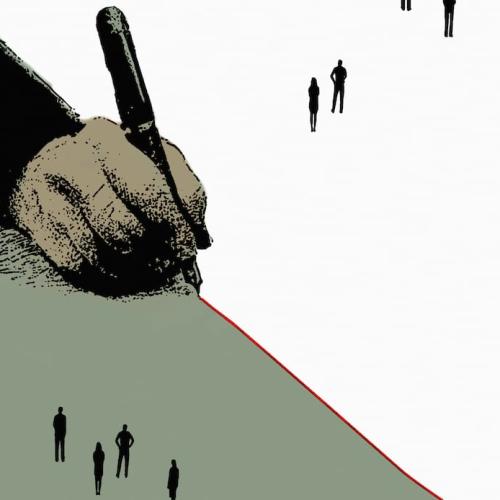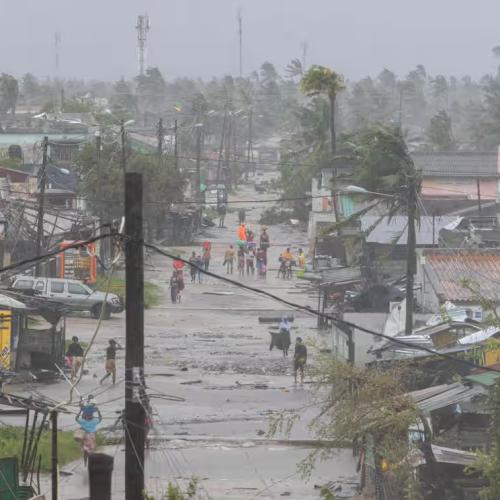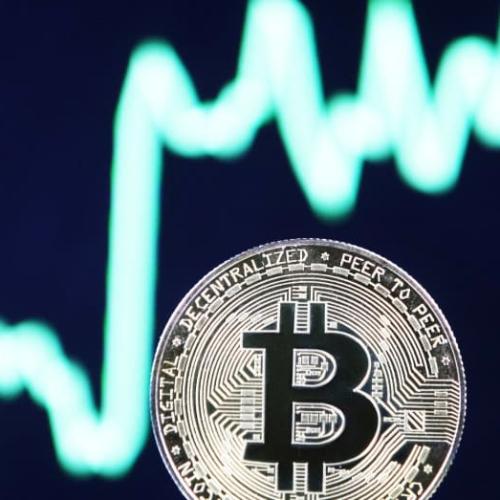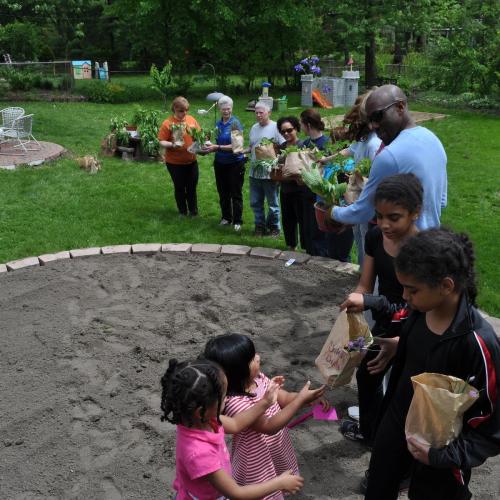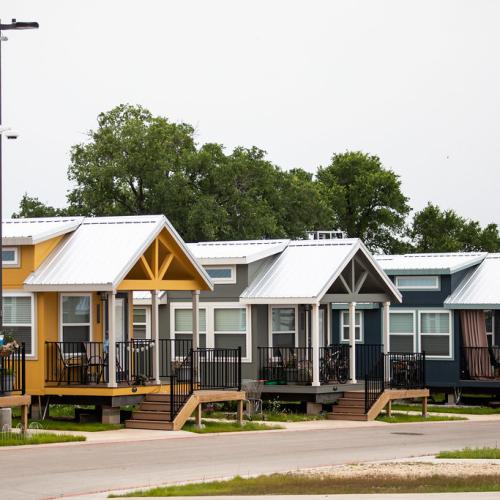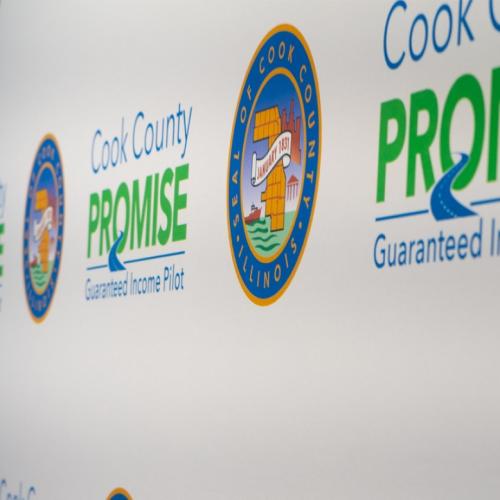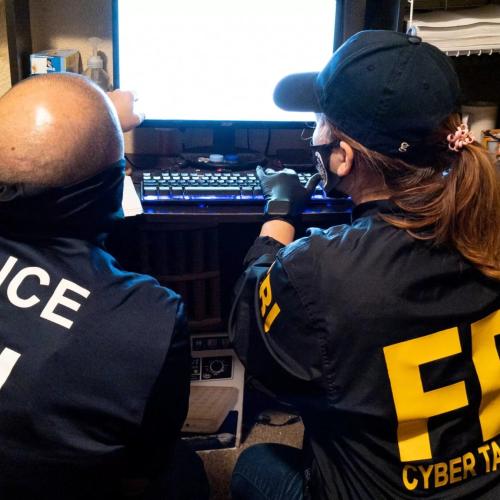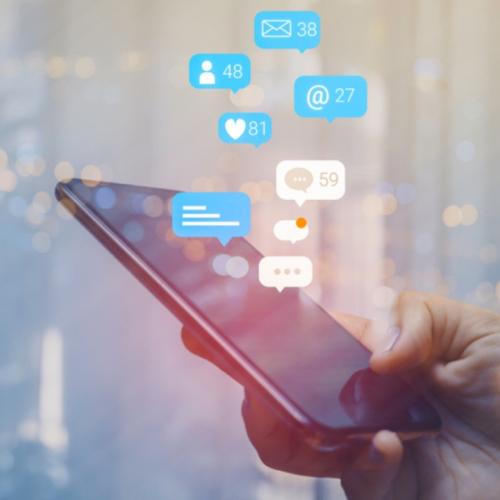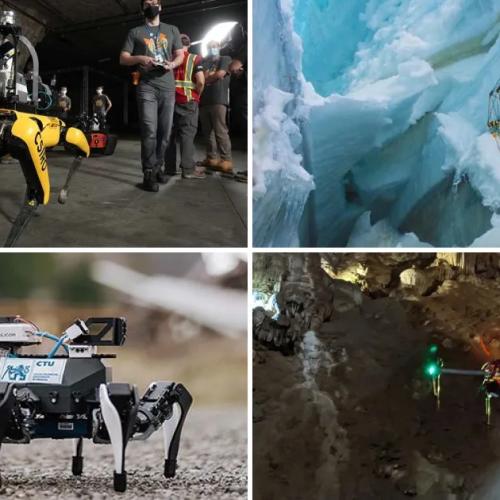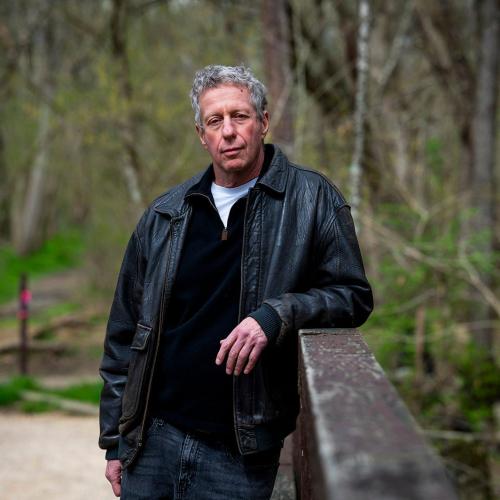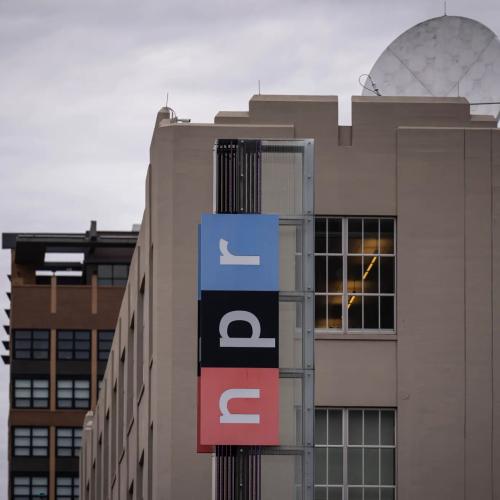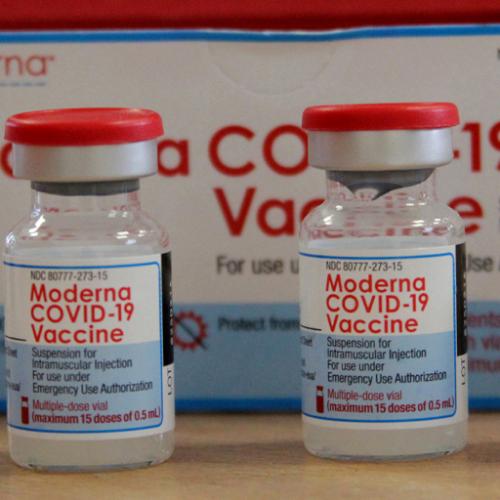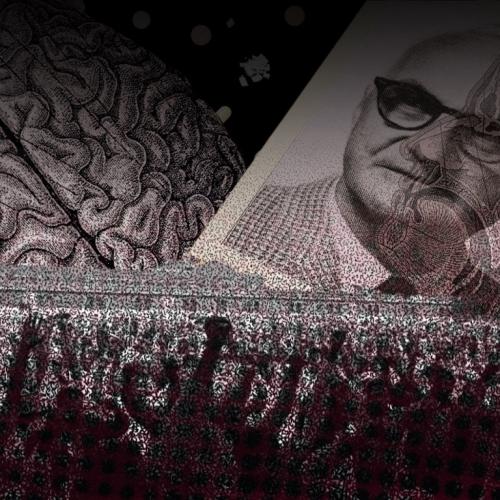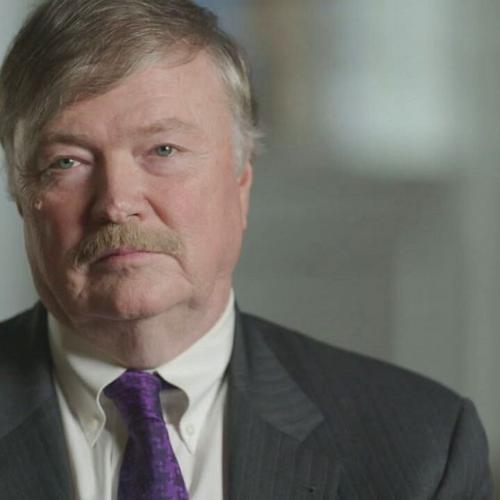Inspiring: Healing Our Bodies News Stories
Below are key excerpts of inspiring news articles on healing our minds and bodies from reliable news media sources. If any link fails to function, a paywall blocks full access, or the article is no longer available, try these digital tools.
For further exploration, delve into our Inspiration Center.
Sitting in a barrel chest-high in ice cubes seems more like torture than a birthday treat. But not for Wim Hof. His techniques, combining hypoxic breathing with ice baths and cold showers, have been adopted by a cult following. Scientists are studying his almost superhuman ability to eliminate fear and control his immune response. Now, a lot of regular people are taking his advice. Amanda Henry, a mother and sixth-grade teacher ... says the stress of distance learning pushed her into 5 a.m. cold showers and Wim Hof breathing. She says the practice helps her to keep her patience. For years, the Iceman, as Mr. Hof is called, gained publicity—and some ridicule—for daredevil feats such as sitting for hours on bare ice. In 2013, researchers ... found that 12 people trained by Mr. Hof and then injected with E. coli had milder flulike symptoms than an untrained control group. In 2019, tests indicated a significant decrease in inflammation in 13 people suffering spinal arthritis over eight weeks of training in breathing, meditation and cold exposure. Mr. Hof’s career was born out of tragedy. He was in the Pyrenees working as a mountain guide when his wife died by suicide in 1995. “That’s the way it actually began—the real trial of my life,” he says. “We were left behind with broken hearts, four kids and no money.” Swimming in icy cold water had for years been a pastime. Now, he found it stopped the rumination and pain. Cold water causes you to be in the moment, he says. “Going into the cold brought ... stillness in my mind.”
Note: This article is available for free viewing on this webpage. Learn more and find an incredible documentary on Wim How on this webpage. Explore a treasure trove of concise summaries of incredibly inspiring news articles which will inspire you to make a difference.
Houseplant sales were skyrocketing among US millennials even before the pandemic, with a nearly 50% rise in sales between 2017 and 2019, according to the National Gardening Association. Now, many like [travel writer MaSovaida] Morgan see them as a necessary tool in fostering optimal work-from-home conditions. Experts say this desire to fill indoor environments with objects from the outdoors ties in to the growing movement toward 'biophilic design', which is a concept used to increase wellbeing through both direct and indirect exposure to nature. Biophilic design was a major office trend in the years leading up to 2020, when Amazon introduced spherical conservatories to its Seattle headquarters; Microsoft debuted treehouse conference room in nearby Redmond, Washington; and Facebook created a 3.6-acre rooftop garden at its Silicon Valley hub. Thanks to the pandemic, millions of [remote workers] now have the chance to create a work environment with their own wellbeing in mind. An increasing body of evidence shows that incorporating nature can help with things like decreasing stress and increasing productivity, creativity and attention span. Beyond adding greenery ... there are several other simple additions for optimising a home office, including light and colour. Natural light supports the circadian rhythms of the body, which regulate our sleep-wake cycle, as well as hormones. Those working in a ... dark environment can typically mimic natural light by incorporate a variety of lighting levels throughout the workday.
Note: Explore a treasure trove of concise summaries of incredibly inspiring news articles which will inspire you to make a difference.
After four Louisville, Kentucky, coal-fired power plants either retired coal as their energy source or installed stricter emission controls, local residents asthma symptoms and asthma-related hospitalizations and emergency room visits dropped dramatically, according to research published today in Nature Energy. Coal-fired power plants are known to emit pollutants associated with adverse health effects, including increased asthma attacks, asthma-related ED visits and hospitalizations. In 2014, coal-fired power plants accounted for 63% of economy-wide emissions of sulfur dioxide (SO 2) in the U.S.. Historically, Kentucky has ranked among the top five states in the U.S. for emissions from power generation. Starting with a pilot in 2012, the city of Louisville embarked on a project called AIR Louisville, which aimed to use data from Propeller Healths digital inhaler sensors to gain insights into the impact of local air quality on the burden of respiratory disease in the community. Between 2013 and 2016, one coal-fired power plant in the Louisville area retired coal as an energy source, and three others installed stricter emission controls. The researchers found that energy transitions in the spring of 2015 resulted in three fewer hospitalizations and ED visits per ZIP code per quarter in the following year. This translates into nearly 400 avoided hospitalizations and ED visits each year across Jefferson County.
Note: Explore a treasure trove of concise summaries of incredibly inspiring news articles which will inspire you to make a difference.
With 17 million residents and 23 million bicycles, the Netherlands already has more bikes than people. Now, it wants to get even more cyclists on the roads - and will pay people to do it. The Dutch government recently announced that it will invest $390 million (345 million) in cycling infrastructure to get 200,000 more people commuting by bike in three years' time. Fifteen routes will be developed into "cyclist freeways" (highways that cater to those on bikes), 25,000 bike parking spaces will be created and more than 60 bike storage facilities will be upgraded, according to the Ministry of Infrastructure and Water Management. "My ambition is to ensure that people can easily get to work or school, or visit family and friends," says Stientje van Veldhoven, state secretary for that department, who is spearheading the project. To get people to ditch their cars, money is being laid on the table. The Netherlands currently rewards commuting cyclists with tax credits of $0.22 (0.19) per kilometer. Companies and employees would agree on the distance of a person's cycling route. However, this is currently a little-known benefit not supported by many employers, according to the infrastructure ministry. That's something the government is hoping to change by better promoting the scheme and getting more companies on board. There are already 11 major employers in the Netherlands committing to measures such as financing employees' bikes.
Note: Explore a treasure trove of concise summaries of incredibly inspiring news articles which will inspire you to make a difference.
We all know how good being in nature can make us feel. In Japan, we practice something called forest bathing, or shinrin-yoku. Shinrin in Japanese means forest, and yoku means bath. So shinrin-yoku means bathing in the forest atmosphere, or taking in the forest through our senses. This is not exercise, or hiking, or jogging. It is simply being in nature, connecting with it through our senses of sight, hearing, taste, smell and touch. Shinrin-yoku is like a bridge. By opening our senses, it bridges the gap between us and the natural world. Numerous studies Ive conducted have shown that shinrin-yoku has real health benefits. So how does one go about forest bathing? First, find a spot. Make sure you have left your phone and camera behind. You are going to be walking aimlessly and slowly. You dont need any devices. Let your body be your guide. Listen to where it wants to take you. The key to unlocking the power of the forest is in the five senses. Let nature enter through your ears, eyes, nose, mouth, hands and feet. Listen to the birds singing and the breeze rustling in the leaves of the trees. Look at the different greens of the trees and the sunlight filtering through the branches. Smell the fragrance of the forest. Taste the freshness of the air as you take deep breaths. You can forest-bathe anywhere in the world wherever there are trees ... in rain, sunshine or snow. You dont even need a forest. Once you have learned how to do it, you can do shinrin-yoku anywhere in a nearby park or in your garden.
Note: The above is excerpted from the book "Forest Bathing: How Trees Can Help You Find Health and Happiness" by Dr. Qing Li. Explore a treasure trove of concise summaries of incredibly inspiring news articles which will inspire you to make a difference.
Ryan Stevens sat on the edge of a concrete balustrade in Central Park after finishing three laps around the reservoir. She and her fellow runners [are] from Odyssey House, a drug and alcohol rehabilitation center. Ms. Stevens, who is 36 and lives in the Morris Park neighborhood of the Bronx, was prepping for Sundays New York City Marathon her fourth, she said as a member of a unique group of competitors: former drug users who turned to running as part of their recovery from opioid addiction. Ms. Stevens said she grew up in Rhode Island and became addicted to her mothers prescription opioids at 22. That opened the door to ecstasy, cocaine and crystal meth. She completed an inpatient residential program at Odyssey House in June. Running, she said, has been central to her recovery. The 45 runners on the Odyssey House team who are planning to run New Yorks 26.2-mile trek include 19 current clients. The rest are supporters and alumni. John Tavolacci, Odyssey Houses chief operating officer, said he has run 22 marathons. He started the running group in 2001 as a supplement to treatment, based on a strong belief that running can be effective in helping overcome addiction. He has watched the Odyssey House team build self-esteem among participants, create a cooperative environment, and fill time for runners that otherwise might have been spent on negative pursuits.
Note: Explore a treasure trove of concise summaries of incredibly inspiring news articles which will inspire you to make a difference.
A new peer-reviewed study shows that eating a completely organic diet - even for just one week - can dramatically reduce the presence of pesticide levels in people, a finding that was characterized as "groundbreaking" by critics of an industrial food system that relies heavily on synthetic toxins and chemicals to grow crops and raise livestock. The study ... found that switching to an organic diet significantly reduced the levels of synthetic pesticides found in all participants. "This study shows that organic works," said study co-author Kendra Klein, PhD. The study tested the urine of four diverse American families ... after eating their typical diet of conventional food for six days and then after a controlled diet of all organic food for six days. The pesticide and pesticide metabolite levels detected in participants dropped by an average 60.5 percent after just six days of eating the all-organic diet. Specifically, the testing showed significant reductions in pesticides associated in the past with increased risk of autism, cancers, autoimmune disorders, infertility, hormone disruption, Alzheimer's, and Parkinson's disease. "This important study shows how quickly we can rid our bodies of toxic pesticides by choosing organic," said [study co-author] Sharyle Patton. "Congratulations to the families who participated in the study and their willingness to tell their stories in support of creating a food system where organic is available to all."
Note: Watch an engaging video on this study at the link above. Explore a treasure trove of concise summaries of incredibly inspiring news articles which will inspire you to make a difference.
New research shows the meditative exercise improves mental health, reduces stress and can prevent reoffending. The power of yoga to change [a prisoner's] life is backed by two Swedish studies that found it may reduce reoffending. The new study, led by Professor Nra Kerekes at University West, Trollhtten, in Sweden, and published last week in Frontiers in Psychiatry, found that 10 weeks of regular yoga can lead to a significant reduction in obsessive-compulsive and paranoid thinking, which in turn, say researchers, can make reoffending less likely. This effect is specific to yoga, and not to exercise in general, they found. It can also lead to a decrease in somaticisation (mental distress leading to physical symptoms such as breathing problems, heart pains and stomach upsets). The study of 152 volunteers in nine medium- and high-security prisons in Sweden builds on a 2017 study of the same volunteers that showed that yoga improved stress levels, concentration, sleep quality, psychological and emotional wellbeing, as well as reducing aggression and antisocial behaviour. A Prison Service spokeswoman says: Research shows activities like this can make prisoners less likely to reoffend, keeping the public safer. She was unable to explain why, given this evidence, it wasnt government policy to make yoga available to all prisoners, but said it was up to individual prison governors to decide which activities to offer.
Note: Explore a treasure trove of concise summaries of incredibly inspiring news articles which will inspire you to make a difference.
If youve ever felt that your green credentials have gone unrewarded, it might be worth considering a move to the Italian city of Bologna. For six months a year, an initiative called Bella Mossa (Good Job) operates within the city, which rewards users of sustainable forms of transport with free beer, ice cream or film tickets. The programme ... aims to reduce pollution and offers residents and visitors an incentive to walk, cycle or take public transport, rather than travel by car. Participants simply download the Better Points app on their phone, where they can log up to four journeys per day. Over 100 businesses in Bologna have signed up to the scheme to offer benefits for points accrued. Points are awarded for the number of trips taken, rather than the distance covered. Whether you travel one kilometre or 10, the points will remain the same. To avoid any abuse of the system, a GPS tracker makes sure people are being honest about the journeys they log and the method of transport used. The app also tells users how much CO2 was saved on each journey. Urban planner Marco Amdori devised the scheme in 2017; its funded by the EU and Bolognas local government. Last year, [Bella Mossa] recorded 3.7 million kilometres of sustainable journeys in the city. This isnt the first time Bologna has led the way when it comes ethical living. In 2008, the Festival of Responsible Travel was established in the city and has continued to run annually ever since.
Note: Explore a treasure trove of concise summaries of incredibly inspiring news articles which will inspire you to make a difference.
Now and again you can find Nonn Panitvong floating facedown in rivers and lakes. Peering intently into the murky waters through his snorkeling mask, the Thai taxonomist is there to observe the behaviors of various freshwater fish species. At other times you can find him in limestone caves. With a flashlight in hand or strapped to his helmet, he scouts around for rare species of karst-dwelling geckos. He looks ... like a businessman, which is what he is: Nonn runs his familys sugar-cane mill conglomerate. Yet hes also among Thailands most intrepid naturalists. Recognized as a biodiversity hero by the Association of Southeast Asian Nations ... Nonn has been a relentless popularizer of his homelands rich biodiversity, partly through his Siamensis.org website. A comprehensive database with some 20,000 members, the site has nurtured a form of crowdsourced ecology. It allows Thai nature lovers from all walks of life to pool their knowledge about often overlooked species, from snakes to dragonflies. Via social media Nonn has been inviting lay nature lovers and trained biologists alike to act as volunteer nature-watchers for neglected areas. The members of his platforms are also keeping an eye on the spread of invasive species. We want to generate and spread knowledge, Nonn says. One of our main themes is If you dont know it, you wont love it. In the end, people will conserve only what they value and love.
Note: Explore a treasure trove of concise summaries of incredibly inspiring news articles which will inspire you to make a difference.
Trauma is a word we hear used to describe a range of experiences. Author and journalist Aminatta Forna thinks the word is overused, and, in her Humble Opinion, it is time to find a new way of talking about terrible events. "My family has seen what feels like more than our share of painful, you might say traumatic, events," [said Forna]. "The murder of my father who was a political activist when I was 11, followed by 25 years of political oppression, 10 years of civil war and even an Ebola outbreak. "Im often asked whether I was traumatized by events, and I have to answer, truthfully, no. Over the years, I have written a great deal about people who have managed to endure events with the power to ruin lives, and this is what I have learned. The more a society tells you that you are irrevocably damaged by what has taken place, the more it becomes a self-fulfilling prophecy. The ability to shape your own narrative, rather than having others shape it for you, is ultimately what matters most. Almost any experience can be reshaped, any destiny re-imagined, if those who have lived it tell their own stories. People who frame their experience within a wider context are often most capable of withstanding painful events. They rarely ask, why me. But rather see the world for the capricious and unfair place it can be, and they have a vision of their role in it. Individual temperament matters, but societal attitudes play a considerable role in shaping our responses. The suffering is real, but it may yet be withstood."
Note: Explore a treasure trove of concise summaries of incredibly inspiring news articles which will inspire you to make a difference.
He has restored eyesight to more than 100,000 people, perhaps more than any doctor in history. His patients ... stagger and grope their way to him along mountain trails from remote villages, hoping to go under his scalpel. A day after he operates to remove cataracts, he pulls off the bandages - and, lo! They can see clearly. At first tentatively, then jubilantly, they gaze about. A few hours later, they walk home, radiating an ineffable bliss. Dr. Sanduk Ruit, a Nepali ophthalmologist ... has pioneered a simple cataract microsurgery technique that costs only $25 per patient and is virtually always successful. Indeed, his Nepal method is now taught in United States medical schools. In the United States, cataract surgery is typically performed with complex machines. But these are unaffordable in poor countries, so Dr. Ruit [pioneered a] small-incision microsurgery to remove cataracts without sutures. At first, skeptics denounced or mocked his innovations. But then the American Journal of Ophthalmology published a study of a randomized trial finding that Dr. Ruits technique had exactly the same outcome (98 percent success at a six-month follow-up) as the Western machines. One difference was that Dr. Ruits method was much faster and cheaper. He founded the Tilganga Institute of Ophthalmology, which ... conducts eye surgery on 30,000 patients annually, [as well as] manufactures 450,000 tiny lenses a year for use in cataract surgery, keeping costs to $3 a lens compared to $200 in the West.
Note: Your direct donation to help this man can cure blindness for many people.Explore a treasure trove of concise summaries of incredibly inspiring news articles which will inspire you to make a difference.
A new study suggests the best way to get over a breakup is to fake it until you make it. Simply believing youre doing something positive to get over your ex can influence brain regions associated with emotional regulation and lessen the pain youre feeling. Remaining open to the possibility that what youre doing could potentially make you feel better works like a placebo. [Researchers at the University of Colorado Boulder] studied 40 young people whod experienced an unwanted breakup in the past six months. The participants were asked to bring in two photos: one of their ex and one of a close friend. Inside a functional magnetic resonance imaging (fMRI) machine, the heartbroken parties were shown images of their exes and asked to reflect on the breakup. Then they saw the images of their friend (the control variable). They were also given a jolt of physical pain (a hot stimulus on their left forearm). As these stimuli were alternately repeated ... the fMRI machine tracked activity in the brain. Similar areas of the brain lit up during both emotional pain ... and physical pain - suggesting that the heartache you feel after a breakup is very real. The subjects were [then] given a nasal spray. Half were told the spray was a powerful analgesic effective in reducing emotional pain, while the rest were told it was merely a saline solution. [After experiencing] the same painful stimuli as before ... the placebo group felt less physical and emotional pain, [and] there was reduced activity in the areas of the brain associated with social rejection.
Note: Explore a treasure trove of concise summaries of incredibly inspiring news articles which will inspire you to make a difference.
Several people in our community swear by earthing - also called grounding - for everything from inflammation and arthritis to insomnia and depression. Longtime earthing-movement leader Clint Ober explains: "The simplest and most natural method of grounding is to go outdoors and place your bare feet and hands directly on the earthmany people choose to go for a barefoot walk in the park or on the beach. For people who dont have safe access to a place to walk barefoot (or for whom its inconvenient to do so for long periods of time), there are grounded mats that allow people to work grounded, with their bare feet placed on the mat. When I started grounding myself, the first noticeable effect was that I slept much better. Eventually I met Dr. Stephen Sinatra, a New York-based cardiologist, who wanted to look into the effect of grounding on inflammation. Since then, weve found that grounding improves sleep, reduces chronic pain, and speeds healing. In fact, many professional athletes sleep grounded, as it reduces pain and facilitates quicker recovery for sore muscles. Grounding greatly reduces blood viscosity, particularly after exercise, in part helping to counteract exercise-induced inflammation. As of today, there are twenty-one ... published studies examining the health benefits of earthing. We currently have [another] study underway at the Chopra Center in Carlsbad, which is designed to measure the effects of body-workers inflammation and health as a result of being grounded during work.
Note: Explore a treasure trove of concise summaries of incredibly inspiring news articles which will inspire you to make a difference.
On a recent Friday morning, a group of about 20 homeless guys warmed up in a parking lot across the street from three shelters in East Harlem. In a circle, they did jumping jacks, twisted their torsos and touched their toes. Fifteen minutes later, they huddled up, chanted the Serenity Prayer ... and took off running. Ryan ... began jogging with the group, known as Back on My Feet, seven months ago. Never a runner, he always wondered what the big deal about it was. Ask him today, however, and hell tell you its so natural, almost spiritual. Back on My Feet is a program that uses running to help the homeless get their lives back on track. In addition to connecting participants with housing and jobs, Back on My Feet is founded on the notion that running can change a persons self-image. Early morning exercise, three days a week, provides an outlet for pent-up emotions and starts to change the way someone thinks about hard work. If the concept seems hokey or contrived, the programs numbers show thats not the case. Back on My Feets program has reached 5,200 homeless individuals. More than 1,900 have obtained employment, and 1,300 have moved into independent housing. Waking up so early every morning - whether the thermometers bubbling over or when its frozen solid - instills discipline and responsibility in the participants. Theyre two valuable concepts, but both are hard to teach in the abstract. They need to be lived to be experienced.
Note: Explore a treasure trove of concise summaries of incredibly inspiring news articles which will inspire you to make a difference.
When Anna Pesce was visiting her children in Wagener, SC, in November 2014, the then-85-year-old Orangeburg, NY, native almost collapsed trying to climb a set of stairs. I had this horrible pain shooting up my back, Pesce [said]. I had to be carried up the stairs and put into a wheelchair for the rest of my stay. For the past few decades, Pesce suffered from hunchbacklike posture - the result of a herniated disc, scoliosis and osteoporosis, which weakens the bones and can lead to curvature of the spine. Three months after her South Carolina visit, she began working with certified yoga instructor Rachel Jesien, [who] visited Pesce in her home once a week, teaching her restorative poses and stretches. After one month of sessions, Pesce was able to walk again. Yoga, done with the guidance of a back-care specialist, can strengthen bone density and muscles and alleviate back pain caused by osteoporosis, osteoarthritis and other conditions that affect the elderly. Dr. Houman Danesh, director of integrative pain management at Mount Sinai Hospital, agrees that doing yoga poses can help some people manage painful back conditions. While Danesh recommends that people go to a physical therapist first for a proper diagnosis, he stresses that one-on-one care with a specialist is key. While older people may feel intimidated by yoga, Jesien says its worth seeking out a certified back-care instructor, and Pesce agrees. I feel wonderful now because I can drive by myself and do the things I wasnt able to do before, Pesce says.
Note: Explore a treasure trove of concise summaries of incredibly inspiring news articles which will inspire you to make a difference.
It was around 7:15 on a recent Tuesday morning. We were in the middle of a partner yoga session at one of the San Francisco editions of Daybreaker, an early-morning dance party that descends, every month, on an increasing number of cities around the world. There wasnt much time for reflection. A massage train was forming in the center of the increasingly brightening Yerba Buena Center for the Arts. People rubbed shoulders and had their shoulders rubbed. Soon, revelers were thronging the coat check. House music thumped from the main room. Near the D.J., Teresa Young ... formed a circle with 10 of her friends. Its hard to motivate people ... to go out to anything these days, but surprisingly the amount of people that will wake up at the crack of dawn to do yoga and dance - massive! she exclaimed, beaming. She works in digital marketing and planned to go from the party to her office. This, its founders say, is why Daybreaker was created: to give people who genuinely enjoy dancing an outlet to do so without alcohol, drugs, cover fees, bottle service or all of the usual accouterments of night life. The emphasis at the San Francisco party was on consciousness, mindfulness, purposefulness and othernesses that generally necessitate being neither drunk nor high. By 9:30, things were winding down. Lana Baumgartner, 28, contemplated how many calories she had burned: Id much rather be dancing with all these people than in a gym.
Note: Explore a treasure trove of concise summaries of incredibly inspiring news articles which will inspire you to make a difference.
Dr. Jim Withers used to dress like a homeless person. On purpose. Two to three nights a week, he rubbed dirt in his hair and muddied up his jeans and shirt before walking the dark streets of Pittsburgh. Withers wanted to connect with those who had been excluded from his care. "I was actually really shocked how ill people were on the street," he said. "Young, old, people with mental illness, runaway kids, women (who) fled domestic violence, veterans. And they all have their own story." Homelessness costs the medical system a lot of money. Individuals often end up in emergency rooms, and stay there longer, because their illnesses go untreated and can lead to complications. For 23 years, Withers has been treating the homeless - under bridges, in alleys and along riverbanks. "We realized that ... we could make 'house calls,'" he said. It's something that Withers' father, a rural doctor, often did. Withers' one-man mission became a citywide program called Operation Safety Net. Since 1992, the group has reached more than 10,000 individuals and helped more than 1,200 of them transition into housing. In addition to street rounds, the program has a mobile van, drop-in centers and a primary health clinic, all where the homeless can access medical care. In the way I'd like to see things, every person who is still on the streets will have medical care that comes directly to them and says, "You matter." Having street medicine in [the] community transforms us. We begin to see that we're all in this together.
Note: Don't miss the video of Withers' inspiring "street medicine" in action at the CNN link above.
People always say to me, Anyone who runs as much as you do deserves to be skinny. Of course, what they're really saying: If you do all this running, why are you still so fat? Early that morning [Mirna] Valerio had led a three-mile group run around the campus of Rabun Gap-Na-coochee School in the nearby town of Rabun Gap, where she serves as Spanish teacher, choir director, and head coach of the cross-country team. She's about to start her second run of the day. Every run, every race, every traverse of a mountain trail, every gym workout, Valerio begins by taking a photo. To prove that I was out here, she explains. Later, she will post the photos on ... her blog, Fat Girl Running, in which she both writes of the joys of the running life and thoughtfully, humorously, and sometimes angrily rebuts her doubters, who can't believe that a self-described fat person might discover - or deserve - this kind of joy. With a BMI ... above the National Institutes of Health-established line defining obesity, Valerio, a marathoner, ultramarathoner, and trail runner, has emerged as ... a living argument that it's possible to be both fit and fat. I'm pretty much in love with my body, she writes. Sometimes I get disappointed or angry with it, but like any long-term, committed relationship, it usually comes right back to love and respect. By making peace with her obesity - or, more accurately, by fighting her disease to a kind of enduring, vigorously active truce - Valerio draws kudos from a formerly skeptical medical community.
Note: Read another great piece on this inspiring woman.
Most everyone who has ever selected their fruits and vegetables from the "organic" section while grocery shopping probably thought they were doing something good for their bodies and the environment. Yet the question of whether organic foods are in fact more nutritious than their conventionally grown counterparts remains a topic of heated scientific debate. On [July 14], the British Journal of Nutrition published research that disputed the notion that organic foods are essentially no more healthful than conventional foods. After reviewing 343 studies on the topic, researchers in Europe and the United States concluded that organic crops and organic-crop-based foods contained higher concentrations of antioxidants on average than conventionally grown foods. At the same time, the researchers found that conventional foods contained greater concentrations of residual pesticides and the toxic metal cadmium. "This shows clearly that organically grown fruits, vegetables and grains deliver tangible nutrition and food safety benefits," said study coauthor Charles Benbrook, a research professor at Washington State University's Center for Sustaining Agriculture and Natural Resources.
Note: Read more about this landmark study in this article.
Important Note: Explore our full index to revealing excerpts of key major media news stories on several dozen engaging topics. And don't miss amazing excerpts from 20 of the most revealing news articles ever published.








